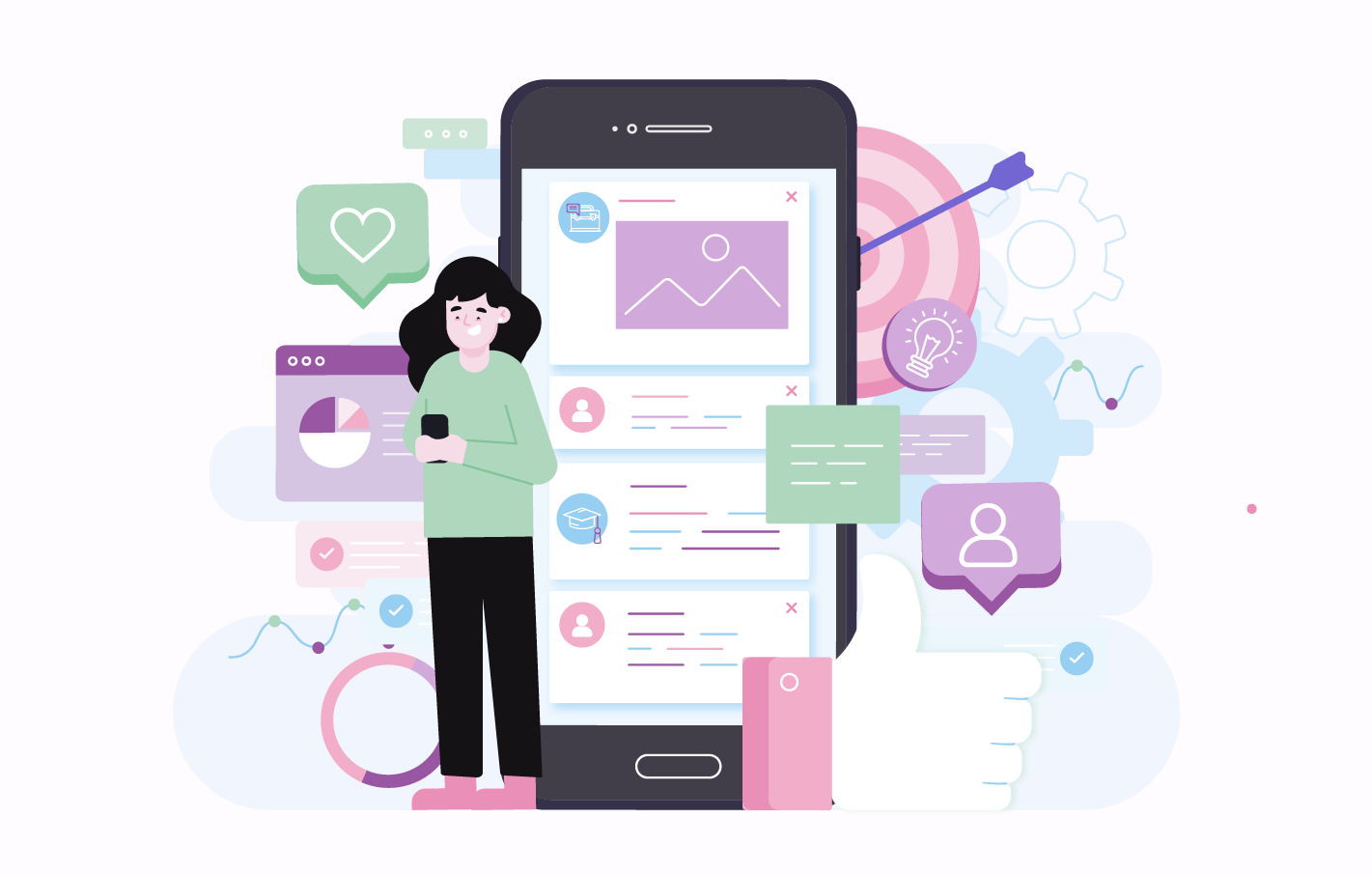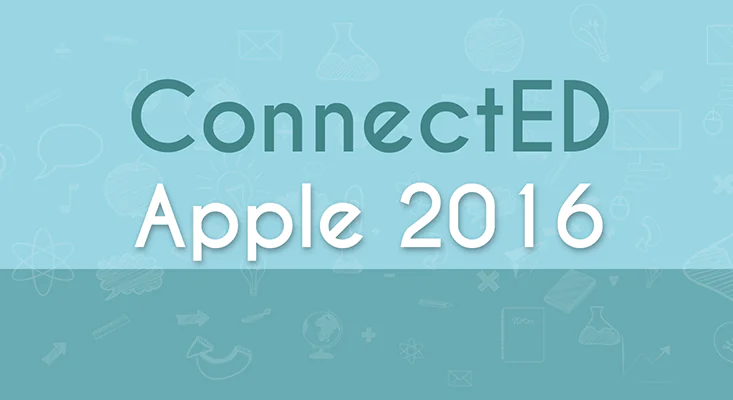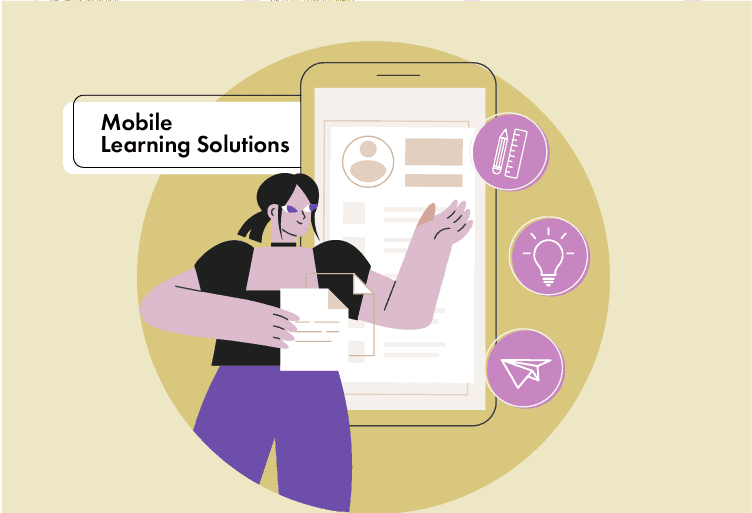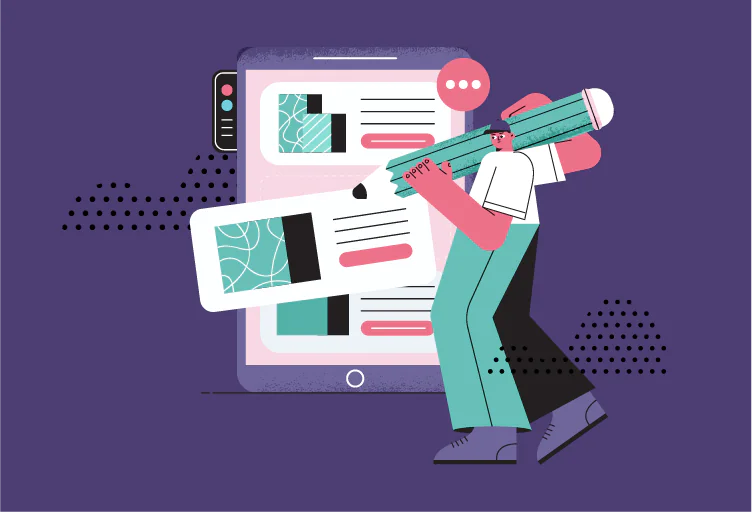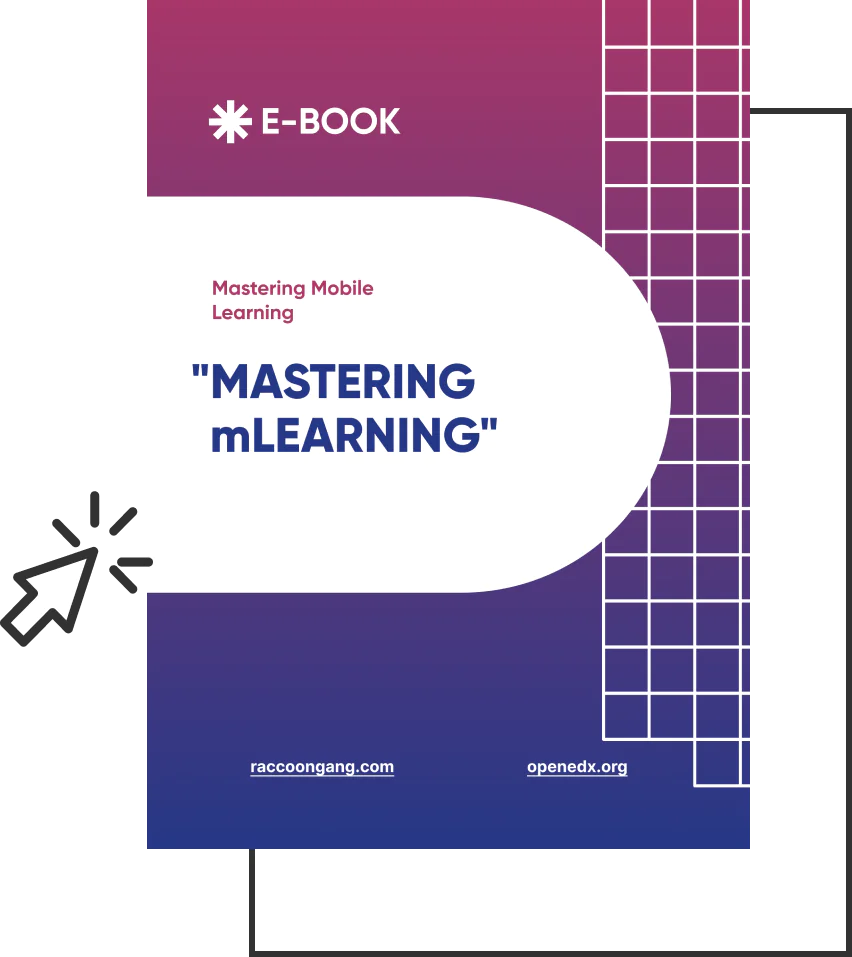Many businesses have already switched to mobile learning to some extent, and the trend continues to grow. They have realized that eLearning solutions that don’t offer high-quality experiences or aren’t responsive on smaller screens are no longer effective. Hence, you also need to ensure that your platform is accessible enough to your employees and learners.
In this guide, you’ll learn how to develop a mobile learning strategy as you prioritize learning on the go.
Expert Tips to Develop a Mobile Learning strategy
Identify Your Business Strategy
Developing a mobile learning solution without defining goals is never a good idea. Work out a business strategy that includes the goals you want to achieve and the problems you want to solve. Your business strategy should answer why you need mobile learning and how it will address your defined problems.
At this stage, you’ll need to consider whether your employees work remotely and how often they travel for business reasons. You will also need to think about whether they need access to training from places with limited internet access and the devices that they use.
When it comes to devices, you need to ask yourself, do your employees work with company-issued devices? Once you have your answer, the process will be easier as you will know which devices you need to optimize the platforms for. If, however, you have the Bring Your Own Device (BYOD) policy, you’ll need to find a perfectly flexible mobile learning solution that works on all devices or find out what devices employees use for office work and design accordingly.
Data is more powerful than anything else. If you have any data about past device usage, it should be a great way to uncover learner audience trends. You’ll get to know exactly what devices were used to view the programs.
In short, defining the goals is an important step as it will help you make the rest of the decisions for your mobile learning strategy.
Choose Your Learning Content
Once you’ve identified your mobile learning goals, decide on the learning content that’s most suitable for mobile learning. Consider the different elements that will need to be included in the solution, such as images, characters, and locations that reflect your company’s field.
Don’t forget to take into account what information regarding the target market, products, price lists, etc., will be used in the content. The more organization-specific your content is, the more engaging they will turn out to be. When learners know that the content strongly relates to their lives, they’re more like to interact with it. When choosing your content, look for options that will most effectively motivate the learners to find out how the ideas delivered through the content apply to their work.
Here are some effective content ideas to make your choice easier:
Video
The majority of companies are looking to leverage video as part of the mobile learning strategy. There are two main reasons for you to choose videos for eLearning:
-
Videos incorporate a vast amount of information in a short amount of time, thereby reducing the training time.
-
Users are more comfortable and accustomed to consuming video content.
Hence, be sure to include video tutorials in your mobile learning strategy to make the solution interesting and engaging for learners.
Online Quizzes and Courses
Online learning courses can be tailored to a variety of subjects. Consider using short mobile courses as pre-work and post-work content if you practice blended learning. Quizzes can be made part of the courses or be included separately.
Podcasts
Keep in mind that visual elements aren’t always useful for learning, such as for interviews with experts. In fact, they can rather be distracting for users such as when they are driving. In situations like these, audio content happens to be a valuable format for mobile learning. To make the most out of audio content, use podcasts for effective mobile learning.
Focus on Mobile-friendliness
Once you enter the design phase of your mobile learning strategy, your primary focus should be to deliver a mobile-friendly experience to learners. This means you’ll need to have small screens in mind throughout the design process.
There are a number of factors that impact the mobile-friendliness of your mobile learning platform. Smartphone users are used to scrolling. So, you want to have long pages so that users are not required to click too often. Embrace the scroll while designing the UI so it’s compatible with mobile devices. However, this doesn’t mean that you stuff unnecessary clicks on a single page. Instead, focus on the most important clicks on individual pages.
When considering how to develop a mobile learning strategy, keep in mind that you’re dealing with a very distracted audience. Mobile learners will be getting phone calls and text messages while consuming learning content. Plus, they’re expected to attend the sessions from anywhere, and certain locations can have a myriad of distractions when they’re trying to consume the information. Also, mobile phone users have a natural tendency to scroll quickly.
Hence, it’s important to use attention-grabbing tactics such as icons, headers, and numbered points to ensure that your key points stand out from the rest of the content. The content itself should also be engaging, powerful, and informative. Try to grab their attention from the very beginning and provide key pieces of knowledge that provide them will real-world benefits to retain their interest.
Not only should your eLearning content be easy to read and manipulate, but the sessions should also be short as an average mobile user will not likely stay on the phone for more than 10 minutes at a time.
Incorporate Fun in Learning
A large number of users access and play games on mobile devices. Hence, it makes sense to incorporate gamification in eLearning. Some of the gaming mechanics to include in mobile learning courses include versatile characters, branching scenarios, locations, and interactivity.
One effective strategy is to combine branching scenarios with dialogue simulation. It is a great way to stimulate active learning and have learners yearning for more.
Select Your Training Tools
The next tip in our guide on how to develop a mobile learning strategy includes selecting a training tool. Let’s take a look at the options you have.
Learning Management System (LMS)
Once you have created your mobile learning course, you’ll need to purchase an LMS to share the content and track learners’ progress. Depending on your business needs, you can opt for an LMS that is tailored for e-commerce or talent management or includes gamification.
Regardless of which LMS you choose, make sure that it delivers content nicely on all mobile devices. It must support responsive content that will adapt to the orientation and screen of any device.
Depending on your business needs, perhaps an LMS with a mobile app could be a valuable solution. To allow employees to learn on the go from any part of the world, they should be able to download and view content from anywhere and at any time. When they reconnect to the internet, the LMS should automatically update with their progress.
If you’re not sure which LMS suits your business, take a look at our guide: LMS Comparison: What LMS suits your needs best?
eLearning Authoring Tool
If you plan to create online course platform in-house, you’ll need an authoring tool. It’s not that an LMS will not allow you to build anything at all. In fact, you should be able to create simple courses and quizzes through the built-in editor offered by LMS. However, for powerful content that will engage people, foster interactions, include branch scenarios, screencasts, and videos, you’ll need a reliable authoring tool.
The latest HTML authoring tools allow for multi-device output of learning content with a range of highly customized features. To deliver the most multi-device friendly learning content, you’ll need to familiarize yourself with the responsive design features of the authoring tool you are using. Here are some of the features to look for and utilize:
-
Interactions and layouts designed to automatically adjust to different screen sizes
-
Easy configuration of font sizes across different devices
-
Function to allow for convenient styling edits across responsive views within one authoring interface
-
A preview mode to test the finished course on various devices
Keep in mind that not all course editors or LMS are perfectly compatible with small screens. You may face problems tracking employees’ performances or uploading courses. Therefore, it’s critical to test the LMS and the authoring tool as a bundle. Your learning platform should allow for easy course upload and management. When selecting an LMS, choose the one with a bundled authoring tool.
Test on Different Devices
Finally, test your eLearning course thoroughly before releasing it to the learners, regardless of how straightforward the design is. Test the deliverables in the delivery environment, on all devices and browsers they’re expected to be used on. Not only should this uncover any technical and other issues, but you should also learn a great deal about how learners access and consume the material.
There are numerous aspects to consider when it comes to ensuring a flawless learner experience on all devices. Use the preview feature of the authoring tool you use to examine each screen on various devices. But no matter how realistic the preview feature is, nothing beats the real user experience. So, take out your smartphones and tablets to view the content on real devices.
Engage your employees in the testing phase and let them interact naturally with the content. Conduct satisfaction surveys and ask the team for feedback on what works and what doesn’t. Directly asking the prospective learners how they like the mobile learning experience should help you improve the content.
Track Learner Activity
Once you’ve deployed your eLearning solution for all learners, the development of the mobile learning strategy shouldn’t come to an end. Keep refining it to improve user experiences and learning. To determine what’s working and what needs to be improved, track learner activity using a SCORM-compliant mobile learning tool.
You should learn how the solution is performing on different devices and a lot more. For example, if one of your mobile learning courses has proved highly engaging, perhaps you can follow up with additional content on the topic in other modules. Likewise, if only a small number of learners have been able to complete the modules, you may want to revisit the difficulty level.
In other words, the real-time data about real learner experiences will be most valuable to nurture your mobile learning strategy and make the mobile courses more engaging.
Final Word
Mobile learning has given employees and learners the power to access knowledge from anywhere in the world. While they are in a public bus commuting to work, in a doctor’s waiting room, or a crowded office, they can remotely access the eLearning modules using their smart devices.
Now that you know the secrets of how to develop a mobile learning strategy, go ahead, and provide your audience with a compelling and memorable learning experience.
For mobile-friendly learning solutions, get in touch with Raccoon Gang. It offers custom-branded and configured online learning platforms using the Open EdX platform. With its in-depth understanding of the complex edX ecosystem, it’s well-positioned to help organizations develop the most innovative learning solutions. To schedule an online learning platform demo, please click here
-
2453 08/Sep/2016
-
1402 26/Nov/2020
-
1919 27/Oct/2020


